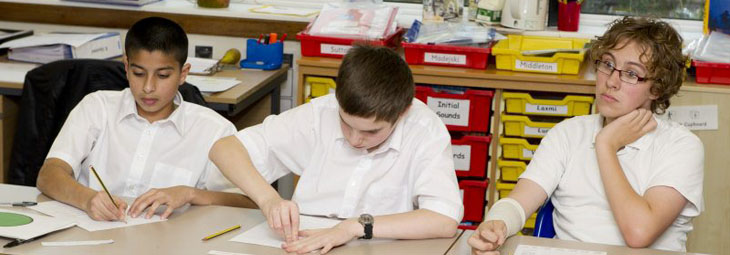
Maths is often represented as a process of linear progression, so that specific skills are learned in a set order – counting first, then addition, then subtraction, then multiplication, then division.
Because maths skills are based on establishing building blocks of learning we can't move on until the first block is learned. But those pupils with SLD have problems with abstract concepts and may never learn even the first block (cardinality).
Therefore, we often end up teaching the same thing throughout the whole of a learner's education! Do we need to look further than number and recognise that a large percentage of learners with SLD will never get the concept?

The developmental approach adopts 'traditional good practice' for SLD/PMLD teaching. It:
- Teaches to a maths curriculum;
- Focuses on a specific objective;
- Teaches one small step at a time, with lots of opportunities for practice;
- Uses the same equipment to avoid confusion;
- Utilises rote learning.
But, this approach may have had the effect of narrowing the maths curriculum in our desire to achieve measurable success against normal development (Robbins, 2000).
Cutler (2000) argues that we may have lost sight of the broader picture, ie:
- Where numbers fit within the number system;
- The relationship between numbers;
- The importance of pattern within maths.
Therefore we might need to make sure that by compartmentalising maths into discrete sessions, we don't neutralise other
learning opportunities.
(Robbins 1996).

For pupils up to the age of 11, perhaps we should try to establish as many basic skills as possible. Developmental age is closer to chronological age and, therefore, more age-appropriate resources are available. After 11, we can establish a base line and stretch children's ability laterally.
Might it be that we get overwhelmed by the need to teach maths as a discrete subject when maybe it almost demands to be taught within other areas?
How much maths is in the art room? What mathematical concepts can we teach
when painting?
Where's the maths in the kitchen? What mathematical concepts can we teach when baking a cake?
Where's the maths out of school? What mathematical concepts can we teach when
travel training?
Click here to compare answers
Click here to compare answers
- Large and small paper
- Different shaped paper
- Different quantities of paint and thick paint/thin paint
- Small brush, big brush
- Estimating quantity needed
- Problem solving if you run out of paper or paint
- How long do you need?
- Time to clear up
- What do you need to do first, what second, what last, etc.?
Return
- Size
- Quantity
- Position
- Measurement
- Weight
- Structure of properties
- Temperature
- Sequencing
- Estimation
- Counting
- Addition and subtraction
- Fractions
- Division
Return
- Estimation of distance, time, etc.
- Spatial awareness
- Speed of traffic
- Relative speed of different traffic
- Speed of walking at different times,
for different purposes - Direction
- Recognising bus numbers
- Reading bus / train timetables
- Direction / routes of buses
- Paying fares
- Counting bus stops
- Sequencing
- Past/next/after/full and other mathematical language.
Return

Cutler, I. (2000) Down the Numeracy Strategy Road. The SLD Experience. 26: 7-8.
Robbins, B. (1996) Mathematics in Carpenter B, Ashdown R and Bovair K. Enabling Access. Effective Teaching and Learning for Pupils with Learning Difficulties. London. David Fulton.
Robbins, B. (2000) Does teaching numeracy lead to mathematical learning? The SLD Experience. 26: 9-12.